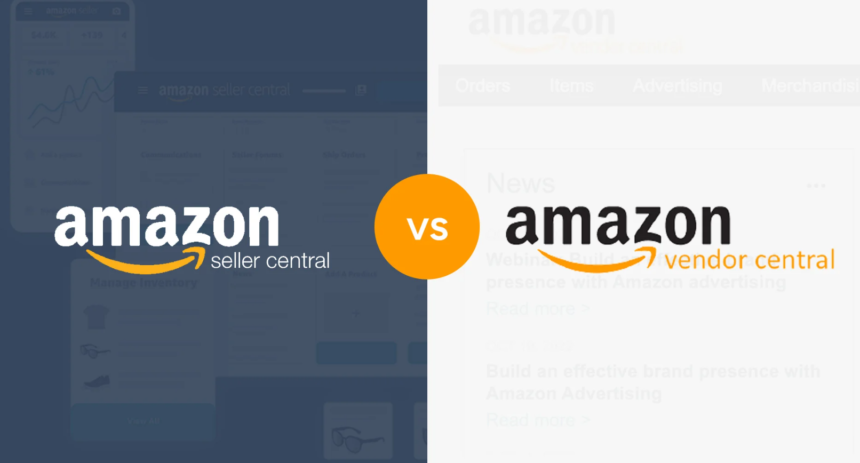In the bustling corridors of online commerce, Amazon Vendor Central stands as a fortress of opportunity for manufacturers and wholesalers aiming to elevate their brands. However, mastering this intricate ecosystem demands more than mere presence; it necessitates a strategic blend of meticulous management, savvy optimization, and unwavering commitment to excellence. Join us as we delve into the essence of Amazon Vendor Central Management and unearth the secrets to unlocking unparalleled success in the digital marketplace.
Decoding the Dynamics of Amazon Vendor Central:
Amazon Vendor Central isn’t just a platform; it’s a gateway to a world of unparalleled exposure and potential. Unlike its counterpart, Seller Central, which empowers third-party sellers to control their listings and pricing, Vendor Central extends a coveted invitation to suppliers, offering direct access to Amazon’s colossal customer base. This exclusive arrangement entails a wholesale relationship with Amazon, where vendors supply products to be sold by the e-commerce giant itself.
Key Features and Benefits:
- Streamlined Order Processing: Vendor Central provides a streamlined process for receiving and fulfilling orders, enabling vendors to efficiently manage inventory and logistics.
- Access to Marketing Tools: Vendors gain access to various marketing tools and programs, such as A+ Content and Amazon Vine, to enhance product visibility and sales.
- Dedicated Support: Amazon assigns a dedicated account manager to vendors, offering personalized assistance and guidance to optimize performance.
- Inventory Management: Vendors can leverage features like Vendor Managed Inventory (VMI) to maintain optimal stock levels and prevent stockouts.
- Analytical Insights: Vendor Central offers comprehensive analytical insights and reporting tools to track sales performance, identify trends, and make data-driven decisions.
Optimizing Product Listings:
A compelling product listing is essential for attracting customers and driving conversions on Amazon. Here are some strategies for optimizing product listings on Vendor Central:
- High-Quality Images: Use high-resolution images that showcase the product from multiple angles and highlight its features.
- Detailed Descriptions: Craft informative and engaging product descriptions that accurately describe the features, benefits, and specifications.
- Keyword Optimization: Incorporate relevant keywords in the product title, bullet points, and description to improve search visibility and ranking.
- Enhanced Content: Use A+ Content to create visually appealing product pages with additional multimedia elements, such as videos and comparison charts.
Navigating Vendor Agreements:
Vendor agreements form the foundation of the relationship between vendors and Amazon. It’s essential to understand the terms and conditions outlined in these agreements to ensure compliance and avoid any potential disputes. Key considerations include:
- Pricing and Payment Terms: Clarify pricing structures, payment terms, and associated fees to avoid discrepancies and financial misunderstandings.
- Order Fulfillment Obligations: Understand the expectations regarding order fulfillment, including lead times, shipping methods, and packaging requirements.
- Product Returns and Refunds: Familiarize yourself with Amazon’s policies regarding product returns, refunds, and chargebacks to handle customer inquiries and disputes effectively.
- Intellectual Property Rights: Protect your intellectual property rights by addressing issues such as trademark infringement, counterfeit products, and unauthorized use of copyrighted materials.
Continuous Optimization and Growth:
Success on Amazon Vendor Central is not a one-time achievement but an ongoing journey of continuous optimization and growth. Here are some strategies for sustaining and expanding your presence on the platform:
- Monitor Performance Metrics: Regularly monitor key performance indicators (KPIs) such as sales velocity, inventory turnover, and customer feedback to identify areas for improvement.
- Experiment with Marketing Initiatives: Test different marketing initiatives, such as sponsored product ads and promotional campaigns, to drive traffic and sales.
- Expand Product Assortment: Diversify your product assortment to appeal to a broader audience and capitalize on emerging market trends.
- Stay Updated on Policy Changes: Stay abreast of Amazon’s policy changes and updates to ensure compliance and avoid any potential penalties or suspensions.
In conclusion, mastering Amazon Vendor Central Management requires a multifaceted approach encompassing product optimization, vendor agreements, and continuous growth strategies. By effectively leveraging the platform’s features and resources, vendors can maximize their success and establish a competitive edge in the dynamic world of e-commerce.














